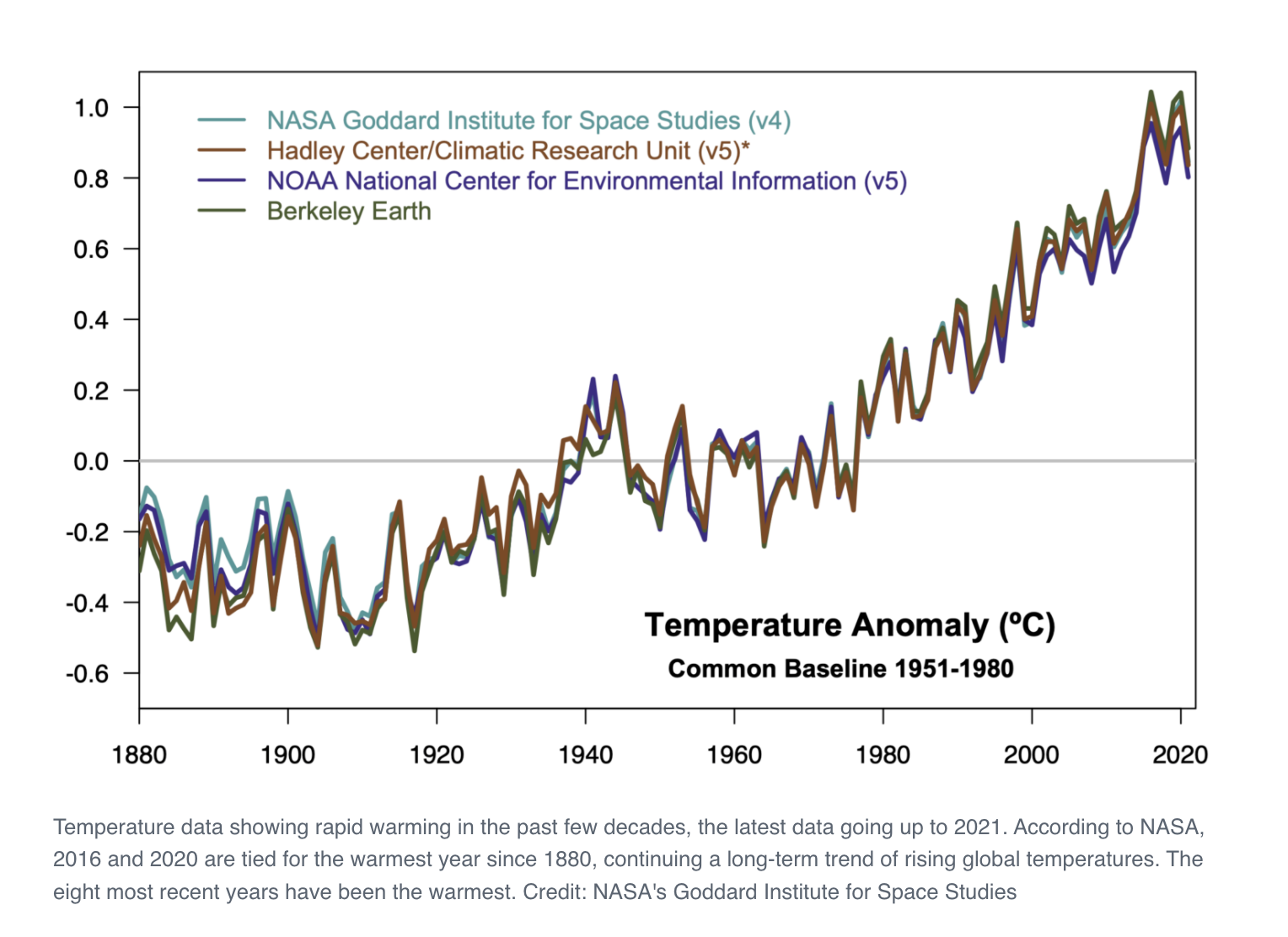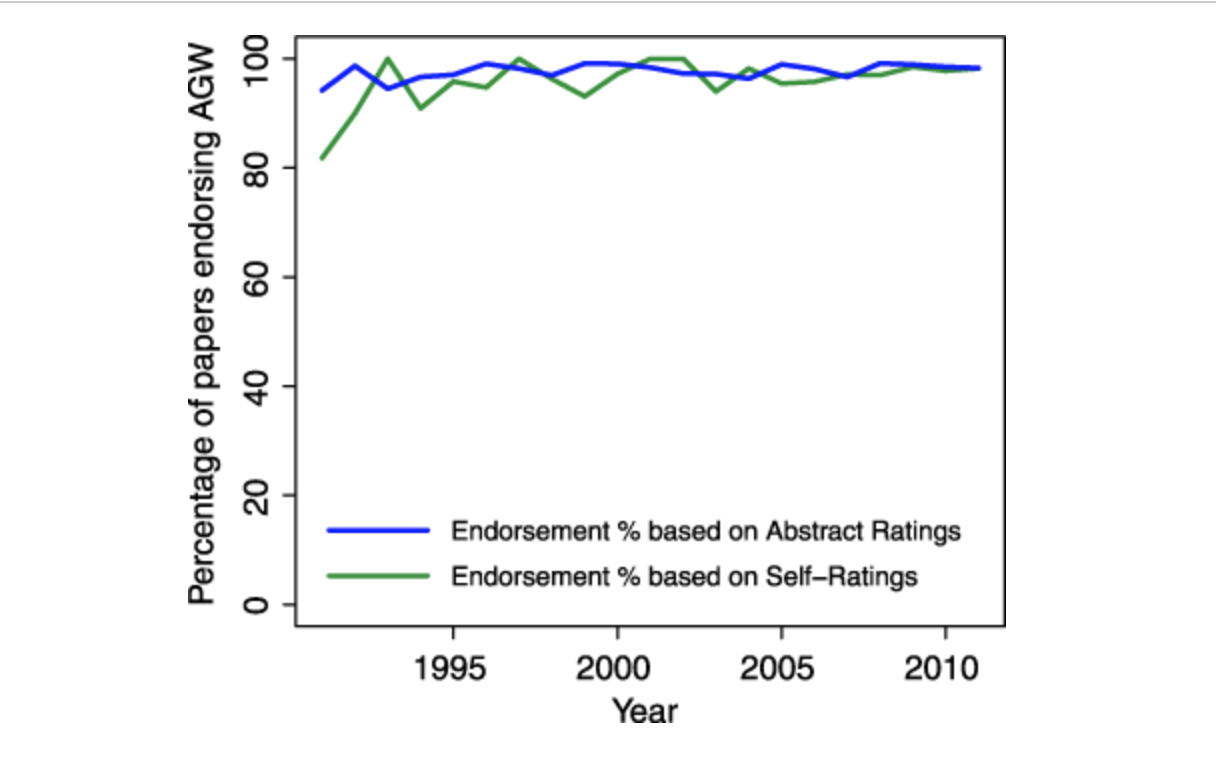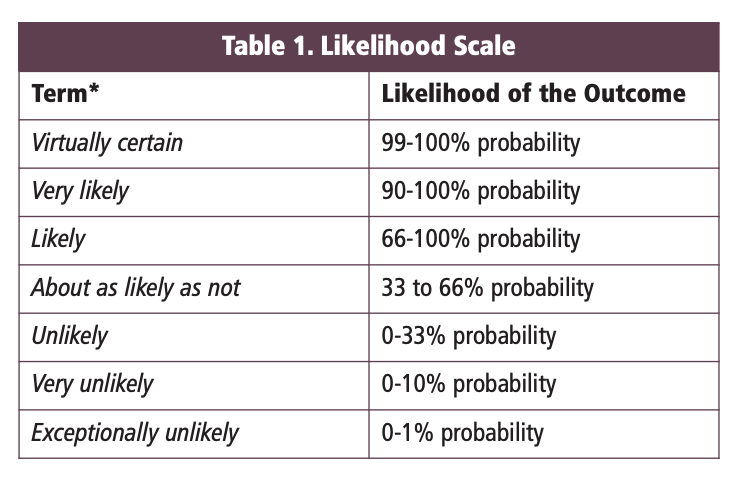Is the climate actually changing and are humans to blame for these changes? Although answers to these questions may, at times, be at odds and conflicting, there is a scientific consensus on climate change whereby a critical mass of studies published in peer-reviewed scientific journals indicate that human activities are the primary cause of the observed climate-warming trend over the past century.
If you were to discuss these issues at home or at a bar with a group of friends, you could work on these conflicting opinions and arrive at a consensus on the causes and possible courses of action that can be undertaken. In this case, a consensus simply involves getting people with potentially different and disparaging opinions to come to a general agreement.
However, the word consensus takes on a different meaning when applied to the scientific method and the work of scientists. When discussing the scientific consensus, we are talking about the starting point that everyone within the scientific community agrees upon, and not necessarily the final answer. This is an important distinction because it implies that future research will not try and undermine the basic assumptions of the consensus but rather try and refine and improve on them.

A classic example is the theory of evolution. Once this theory gained recognition as a scientific consensus researchers were able to expand on it and refine it, leading to the discovery of genetics which then led to the discovery of DNA and so on. The research didn’t focus on undermining the concept of evolution but rather worked to build upon it.
The idea is that if we want to progress and develop our understanding of the world then we must build on what has already been established. The scientific consensus is exactly that: what we know already and therefore the building blocks of future knowledge.
So how exactly do we reach a scientific consensus, what does it entail and how can we leave space for uncertainty and ensure that facts are not manipulated and used to achieve pre-determined goals?
What is the scientific consensus?
In broad terms, a scientific consensus is what an overriding majority of scientists or experts establish to be true about a given issue once they have addressed all evidence currently available to them. This is done by looking at scientific papers, which are themselves papers that have been reviewed by a host of other experts who pick through their experimental processes, findings and limitations.
Only after a scientific paper goes through this process can it be published in a peer-reviewed journal, standing on the shoulders of the work of other experts and papers that came before it.
This ensures that scientific consensus is not simply majoritarian rule but rather a synthesis of the conclusions reached by a wide range of scientists from different backgrounds and potentially areas or sub-areas of expertise when looking at an overriding issue.
Finally, scientific consensus should not be regarded as a fixed point but rather an issue that is still open to updates, changes and corrections but whose founding principles are extremely sound and would take a complete paradigm shift to be challenged and altered.
Climate change
With regards to climate change the scientific consensus concept has increasingly taken centre stage. This is because the last two decades have revolved around both establishing the building blocks for understanding and addressing climate change and providing a synthesis of the scientific evidence with which to explain and tackle the issue.
According to Dr Sandro Fuzzi, who has participated in numerous IPCC reports and is currently research director at the Italian National Research Council | CNR · Institute of Atmospheric Sciences and Climate ISAC of Bologna, “From a scientific point of view there is undeniable that human influences cause climate change which makes extreme climate events more frequent and serious,” he explains when talking on the Voci della Scienza podcast.
“The other important thing is that climate change is already affecting all parts of the earth and is no longer a problem of single countries or areas of the globe. These effects will increase if global warming also increases and the final point of consensus is that in the absence of immediate and far-ranging cuts in greenhouse emissions then limiting warming to 1.5 degrees Celsius, which is considered a precautionary limit with which as a global community we can adapt to them, this objective will be out of reach. Therefore we need immediate action,” Fuzzi continues.
This indicates that the consensus on climate change is that global warming exists, it is anthropogenic and that it can only be tackled if we all act now and on a global scale. However, what is the extent of this consensus and how has it been reached?
The climate consensus refers to the agreement among experts on climate change, and therefore those that have published at least one or more articles in peer-reviewed papers. This is important because it means that their work has been seen approved and revisited by other experts in the field.
In fact, numerous studies published between 2004 and 2015 point to the fact that 97% of experts on climate change confer on the existence of climate change and its anthropogenic origins.
Some of the most influential studies include the 2004 paper published by Naomi Oreskes in Science, which established that most scientific investigations agree with the IPCC’s statement that “Human activities […] are modifying the concentration of atmospheric constituents […] that absorb or scatter radiant energy […] Most of the observed warming over the last 50 years is likely to have been due to the increase in greenhouse gas concentrations.”
Similarly, a 2013 paper by John Cook, published in the peer-reviewed journal Environmental Research, quantifies the scientific consensus on climate by looking at all peer-reviewed articles and counting how many refer to anthropogenic climate change, concluding that: “Among abstracts expressing a position on anthropogenic climate change, 97.1% endorsed the consensus position that humans are causing global warming.”

Other studies have used techniques such as questionaries among experts with results that have always reached between 90 and 100% consensus on the anthropogenic nature of climate change.
Furthermore, the IPCC, which was in itself created to provide policymakers with regular scientific assessments on climate change, also works towards providing a synthesis of existing scientific knowledge on topics related to climate change and therefore arrive at a scientific consensus.
The IPCC does this by selecting experts from a list of leading authors which are around 150 to 200 per Working Group. These authors then analyse all literature on their given topic, open it up to two rounds of public consultations, which are open to climate experts, and then create a final report. This final text is then presented whilst also highlighting the changes that were made during the reviews.
“For example, in the last report by the IPCC Working Group 1 there were 78,000 comments by external reviewers and for each of these comments there was an answer by the leading authors, all of which is now public,” explains Fuzzi. This process plays out over three years and can be said to express the true outlook of the scientific community and therefore a scientific consensus on climate change.
The value of uncertainty and doubt
“The scientific consensus might, of course, be wrong. If the history of science teaches anything, it is humility, and no one can be faulted for failing to act on what is not known. But our grandchildren will surely blame us if they find that we understood the reality of anthropogenic climate change and failed to do anything about it,” reads the influential 2004 paper, The Scientific Consensus on Climate Change, by Naomi Oreskes.
Leaving space for doubt and hence the evolution of the consensus is vital. For example, the IPCC does this by using different terminology to establish the certainty with which any given claim on the climate is made. If something is established to be between 99-100% probable it is termed as virtually certain, if it is between 90-100% it is very likely, between 66-100% it is likely and so on, until 0-1% which is considered exceptionally unlikely.

This is important because political decisions on climate issues are heavily influenced by consensus on climate issues in the scientific community. According to Antonio Navarra, President of the Euro-Mediterranean Centre on Climate Change, and IPCC focal point for Italy, “The impact of the IPCC has been huge because it has allowed us to have an overview of the state of knowledge on climate change and its impact on various sectors including the social and economic consequences of a changing climate […] The IPCC’s work has therefore informed policymakers and established the knowledge base on which political negotiations on climate issues have been undertaken.”
In this way, the scientific consensus is important as it influences political decision making. If a scientific community presents itself as a unified block offering a synthesis of all its findings and a unique voice then this can carry a lot more weight and influence than any individual paper or piece of research.
Science has done its part showing that climate change is real and caused by humans. Although policymakers have recognised this consensus the action necessary to address these issues is still to be undertaken. The new scientific consensus is that not enough is being done.
“Determining that climate change is anthropogenic is one, first, step […] we need to monitor and investigate the climate continuously,” concludes Navarra.






